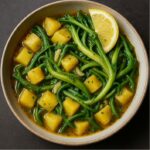Authors: Cobaia Kitchen, Gemini 2.5 Pro, Claude 3.7 Sonnet
Photos: Cobaia Kitchen, DALL-E 3, GPT-4o
This recipe for Puntarelle and Potato Stew with Gremolata was born from a happy accident and a curious AI chef. When I stumbled upon a bundle of puntarelle—those quirky, bitter Italian chicory stalks—marked down to half price at my local organic market (clearly the produce manager had no idea what to do with them either!), I couldn’t resist the rescue mission. Armed with my bargain vegetable and a handful of potatoes, I prompted an AI recipe generator to create something plant-based with a low carbon footprint. The AI (a GPT model with a flair for the dramatic) suggested this hearty Italian-inspired stew, complete with a zesty gremolata topping that brings the whole dish to life. The recipe turned out so deliciously that it inspired the tragicomic tale you’ll find below—a story about an Italian mafia boss, his pacifist son, and the puntarelle tattoo that changed their lives forever. Who knew a half-price vegetable could lead to such culinary and literary adventures?
Please read the review before cooking!
Puntarelle and Potato Stew with Gremolata
Equipment
- pots with lids (alternative: Rice cooker with soup function)
- knives
- cutting board
- garlic press
- grater
Ingredients
- 450 g Puntarelle
- 600 g Potatoes Yukon Gold or similar
- 3 tbsp Olive Oil
- 3 cloves Garlic
- 1/2 tsp Red Pepper Flakes adjust to taste
- 750 ml Vegetable Broth
- 1/4 cup Fresh Parsley chopped
- 1 Lemon zest and juice
- Salt and Black Pepper to taste
Instructions
- Prepare the Puntarelle: Wash and trim the puntarelle. If the stalks are thick, slice them thinly lengthwise. If using the core, soak the shredded pieces in ice water to encourage curling.
- Prepare the Potatoes: Peel and dice the potatoes into 1-inch cubes.
- Sauté Aromatics: In a pot, heat olive oil over medium heat. Add minced garlic and red pepper flakes. Sauté for about 1 minute until fragrant, being careful not to burn the garlic.
- Cook Potatoes: Add the diced potatoes to the pot and stir to coat them with the garlic-infused oil. Cook for about 5 minutes, stirring occasionally, until the potatoes start to soften slightly.
- Add Broth and Simmer: Pour in the vegetable broth. Bring to a simmer, then reduce heat, cover, and cook for about 15 minutes, or until the potatoes are tender.
- Add Puntarelle: Add the puntarelle to the pot. Stir well and cook for another 5-7 minutes, until the puntarelle is tender-crisp.
- Prepare Gremolata: While the stew simmers, prepare the gremolata. In a small bowl, combine chopped parsley, lemon zest, and a squeeze of lemon juice.
- Season and Serve: Season the stew with salt and black pepper to taste. Stir in a bit more lemon juice if desired.
- Serve: Ladle the puntarelle and potato stew into bowls. Top each serving with a generous spoonful of gremolata.
Notes
Serving suggestion:
Allergens:
- Check the ingredients of your vegetable broth!
Emission Hotspots:
- Shop to home transportation, if a combustion car is used
Sustainability tips:
- Walk or bike to the supermarket and farmer’s market
- Buy local, unpackaged potatoes to reduce their carbon footprint and avoid unnecessary plastic
- Buy organic vegetables to reduce chemical intake and enhance biodiversity
- Make your guinea pigs 🐹 happy by giving them some of the outer puntarelle leaves
- Embrace “ugly” produce like those half-price puntarelle we rescued! Imperfect fruits and vegetables are often thrown away despite tasting just as good as their prettier counterparts
- Preserve puntarelle properly – if you have extra after making the stew, consider soaking the remaining stalks in ice water to keep them crisp for another meal.
- If you have one, use a rice cooker or similar with soup function to save energy

Carbon Footprint
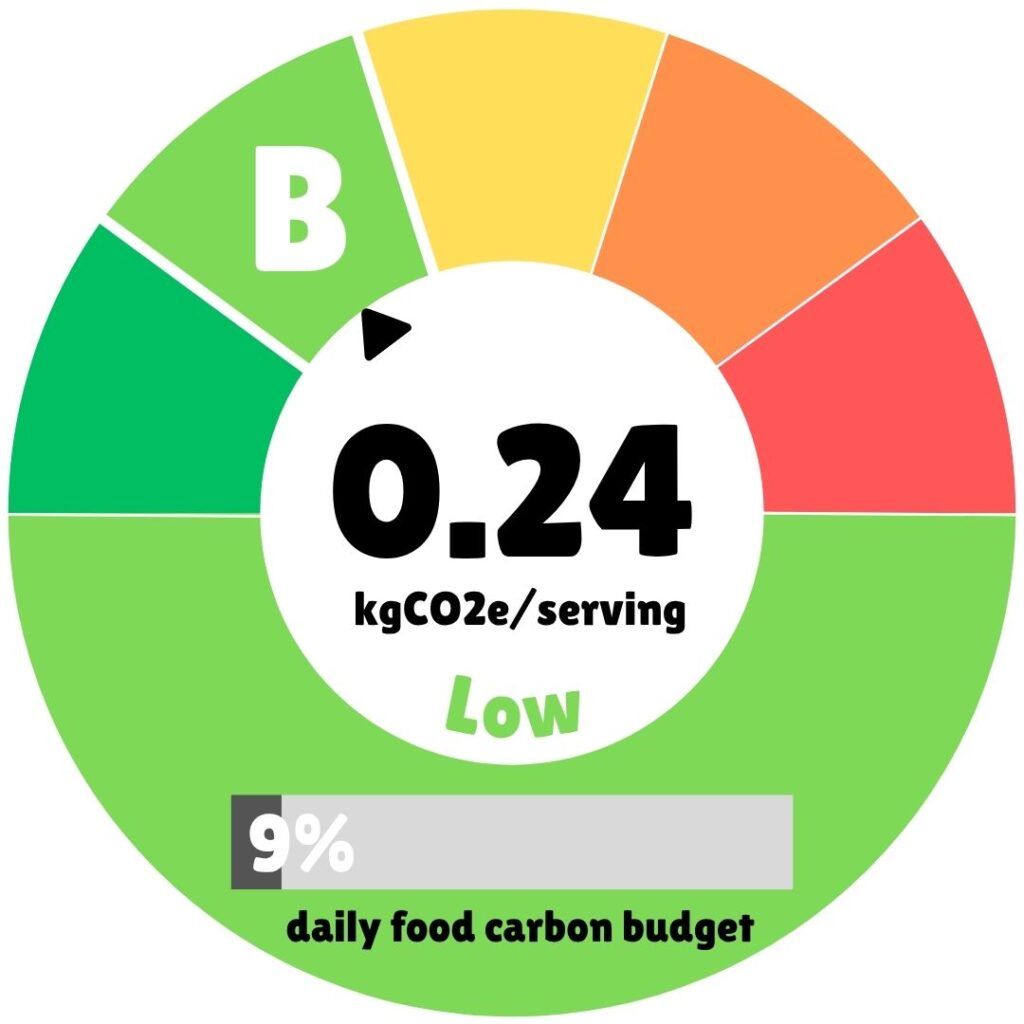
Carbon footprint of one serving. Read here how we calculate the carbon footprint.
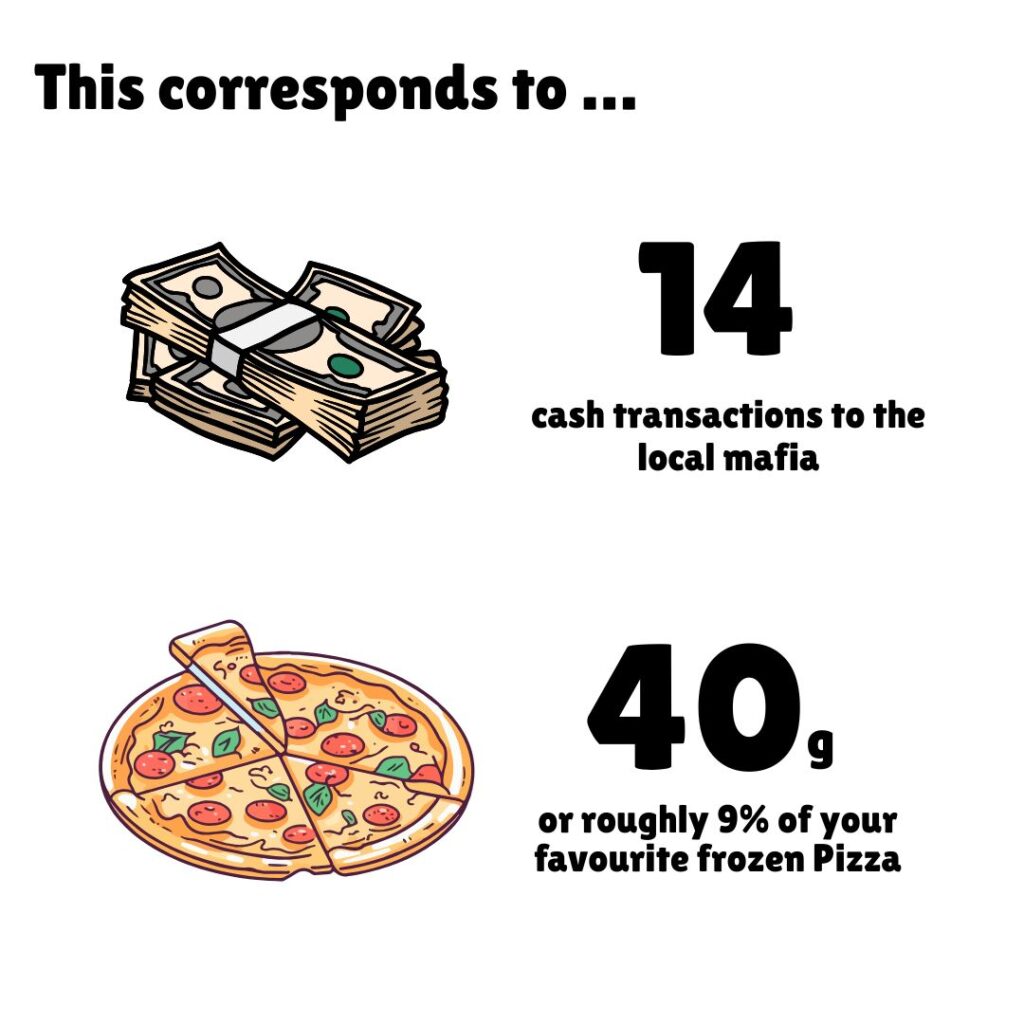
Featured Story
The Bitter Chicory of Fate
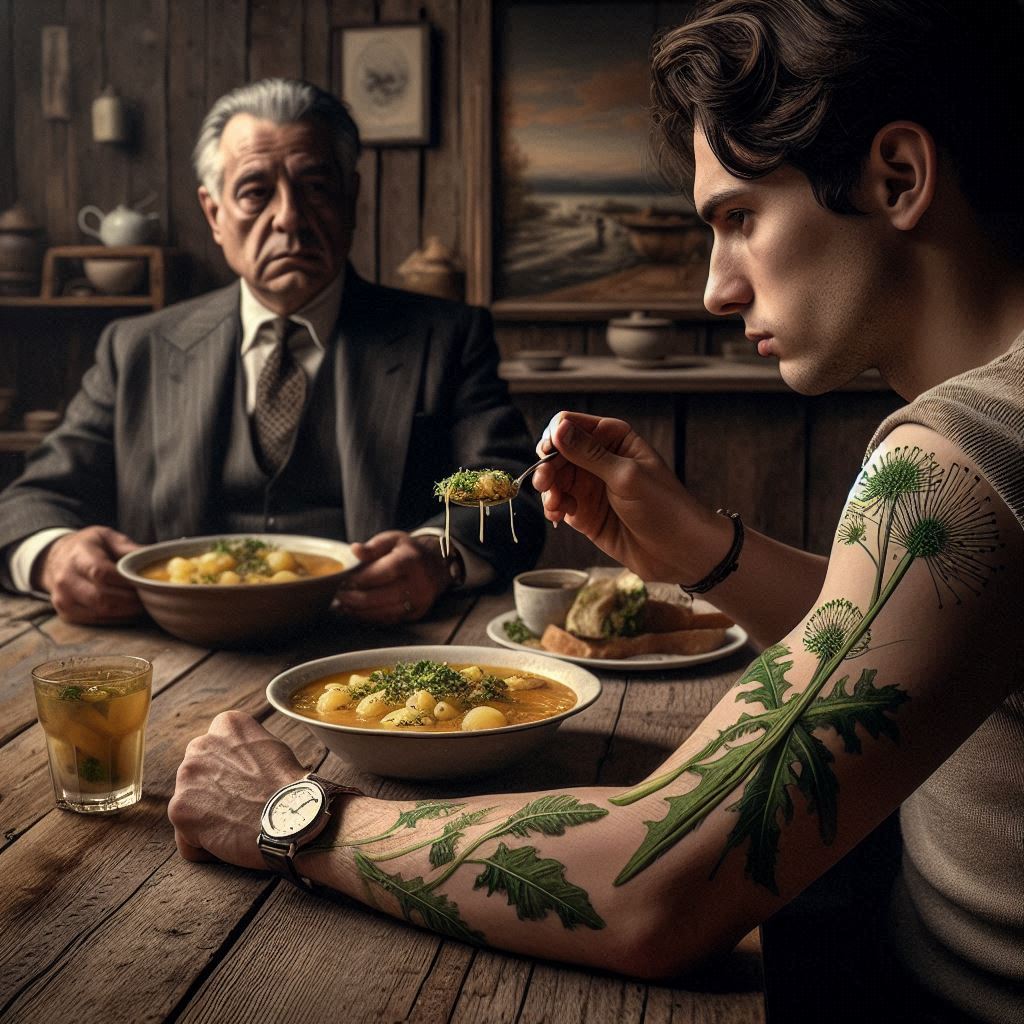
In the peculiar universe that was Little Italy, where coincidence and absurdity waltzed together with alarming frequency, Don Salvatore Bianchi maintained a reputation that bordered on mythological. The Don—a man whose hands had orchestrated both symphonies of violence and, more rarely, gestures of inexplicable kindness—underwent a transformation every Sunday that his associates found both bewildering and vaguely unsettling. When Nonna Maria announced her intention to prepare Puntarelle and Potato Stew, the Don would perform what his wife called “the disarmament ritual,” removing his shoulder holster with the ceremonial gravity of a priest disrobing after mass. “The puntarelle,” he would announce to no one in particular, “demands respect,” a statement that, like many of the Don’s pronouncements, no one dared question despite its apparent absurdity.
Marco Bianchi—born in the same hospital where his father had once ordered a hit on a rival capo, though this coincidence was never mentioned at family gatherings—had developed into what his father called “a crushing disappointment wrapped in expensive education.” A Columbia Law student with an inconvenient moral compass, Marco had committed the unforgivable sin of believing in justice rather than family loyalty. His sole act of rebellion was the tattoo on his left forearm: a puntarelle stalk rendered with almost botanical precision, which he’d acquired during a period of drunken melancholy after his first constitutional law exam. The tattoo served as a strange bridge between father and son, a shared appreciation for bitter greens that somehow survived their otherwise unbridgeable differences.
The world’s tendency toward cruel irony revealed itself fully when ICE agents appeared at the Bianchi brownstone one Tuesday morning. The agents—men who bore an uncanny resemblance to Don Salvatore’s own enforcers—identified Marco’s vegetable tattoo as a gang symbol with the confident incorrectness that only federal agents can muster. “Deportation is immediate under the new executive order,” they explained, as if reciting from a manual of absurdist bureaucracy. Nonna Maria’s theatrical faint onto the plastic-covered sofa (protected from both human oils and the vagaries of fate) provided no distraction. Marco—the only truly innocent Bianchi in generations—was escorted away while Don Salvatore stood immobilized by the universe’s dark joke, a spoonful of gremolata suspended in the air like a question without an answer. And so it came to pass that Sunday dinners in the Bianchi household acquired the quality of a Greek tragedy performed in a minor key, with an empty chair that seemed to grow more significant with each passing week, and a dish of bitter greens that no one could finish but no one dared to stop preparing—a ritual continued in defiance of a world determined to separate those who belonged together.
Culinary Reality Check
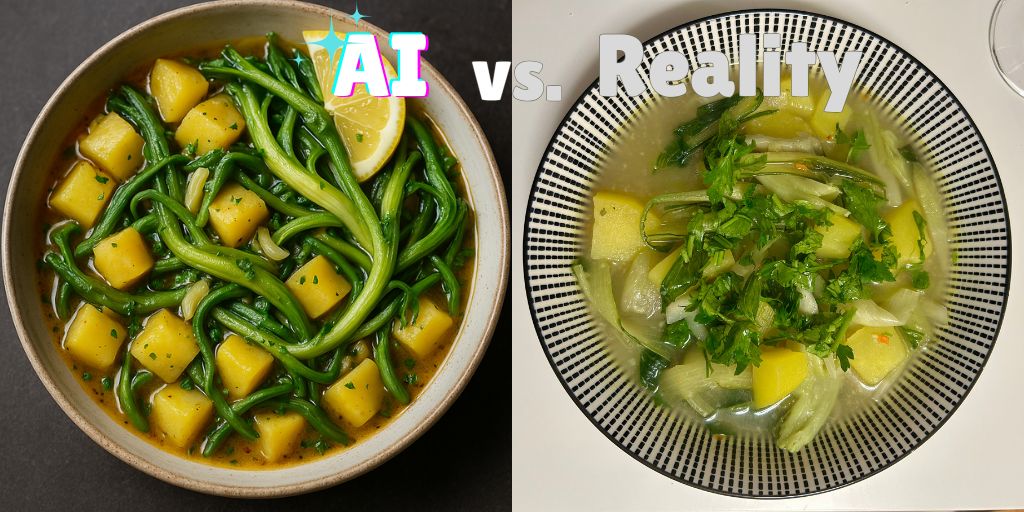
The rescue mission of half-price puntarelle from the organic market’s discount bin has culminated in an unexpected culinary triumph. Our AI-generated stew transforms these bitter Italian chicory stalks into a sophisticated dish that punches well above its carbon footprint. While impressively nutritious and environmentally virtuous, this creation’s only shortcoming lies in its modest portioning—you’ll want to increase the potato quantity for a satisfying main course. What follows is the complete assessment of this digital-age recipe that turned markdown produce into memorable cuisine.

Taste
The flavor profile is surprisingly sophisticated for such a simple preparation—bitter puntarelle mellowed by hearty potatoes, with bright citrus notes from the gremolata cutting through like sunshine after rain. It’s the culinary equivalent of finding a designer handbag at a thrift store price.

Portion Size
Here’s where our AI chef needs a minor reprogramming. As a main course, this dish leaves one wanting more, like a Netflix series that ends on a cliffhanger. Consider it more of a starter unless you’re planning to supplement with bread or a side salad. For a satisfying main course, increase the potatoes to 900g and prepare for seconds.

Combination
The marriage of ingredients works with unexpected harmony—like discovering your favorite song sounds even better in acoustic version.

Texture
The texture hits that perfect balance between tender and firm, with the potatoes providing comfort while the puntarelle maintains just enough bite to keep things interesting.

Spices
The garlic provides a solid foundation, while the chili flakes add just enough heat to wake up your palate without overwhelming it. The lemony gremolata brightens everything like a well-timed joke at a dinner party.

Timing
The recipe’s timing estimates are impressively accurate for an AI creation. However, first-time puntarelle wranglers may need to budget extra minutes to figure out this unusual vegetable—it’s like assembling IKEA furniture for the first time.

Processing
Instructions are straightforward enough that even a cooking novice could follow them without confusion.

Completeness
Both the ingredient list and instructions are thorough and well-considered, like a travel itinerary planned by your most organized friend.

Environment
This dish has a carbon footprint smaller than a ballerina’s slipper—fully aligned with our Net Zero goals. Our rescued puntarelle would be proud of its second life in such an eco-friendly preparation.

Health
The nutritional profile is impressive—high in fiber and micronutrients while maintaining moderate calories. The macronutrients are appropriately balanced for a plant-based dish, though adding a protein source might create a more complete meal.

Tips for Redemption
- Unless you’re serving this as a starter or you’re participating in an intermittent fasting experiment, increase the potatoes to at least 900g.
- Unless opting for frozen parsley, increase the amount of fresh parsley to at least 1 cup
- For a combination that elevates this dish from “delicious experiment” to “dinner party worthy,” serve toasted Ciabatta with freshly made wild garlic (Bärlauch) pesto. This wild garlic grows in European forests and can be collected in April—just be careful to identify it correctly, as foraging mistakes tend to be rather permanent.


